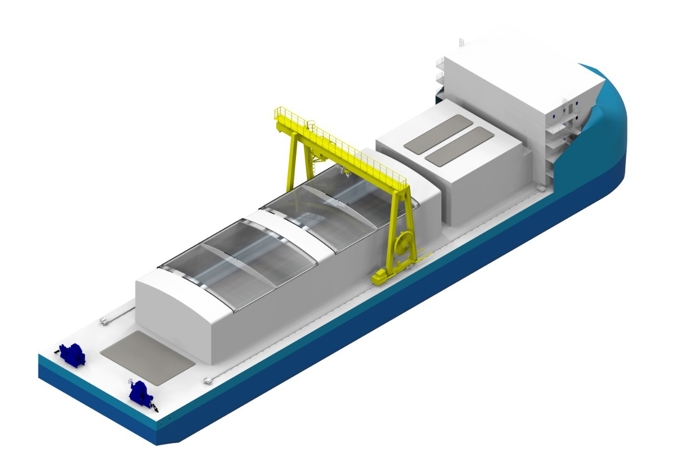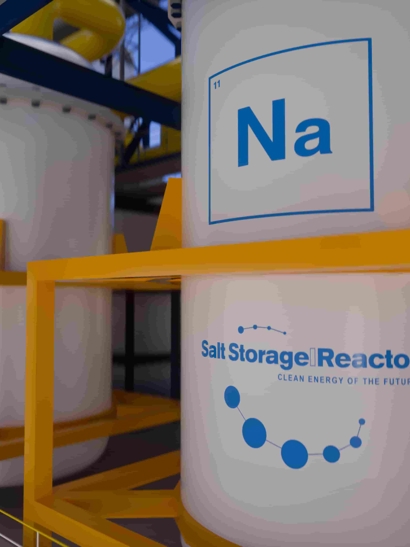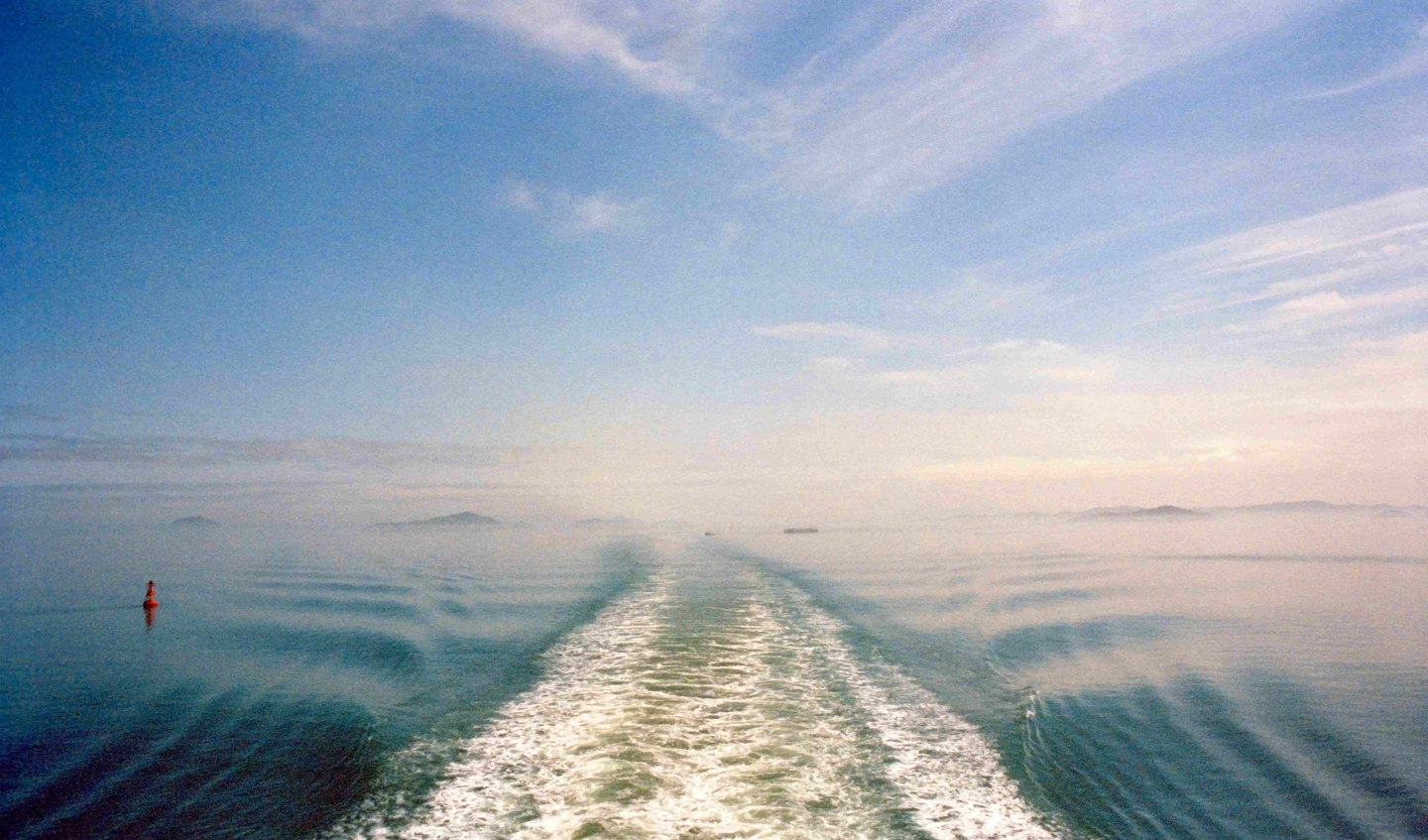Highly pressurised reactors require a wide evacuation zone to be maintained by the operator, creating an unlimited and untenable liability for operators of commercial ships. Navies with sovereign guarantees can overcome the complexities of port calls, but commercial shipping companies cannot. Now, a new generation of unpressurized reactors is being developed that could change this completely. New nuclear technologies could provide true-zero emission electric power for global shipping, without the restrictions of unlimited liability for commercial shipping.
Molten salt reactor (MSR) technology is now a focus of attention among energy experts as shipping wrestles with the decarbonisation challenge.
MSRs are unpressurized allowing the evacuation zone to be limited to the boundary of the vessel. MSRs are liquid fuelled reactors, and so by nature cannot melt down. Exceptional fuel efficiency means they leave little waste behind, and in-line refuelling implies that they can be operated continuously for as long as 30 years, without stopping.
Lloyd’s Register is currently working on the assurance framework for molten salt reactor installations with Core Power, a UK-based maritime and technology-based company specialising in nuclear energy systems for offshore and marine applications.

“Once the initial shock of the ‘nuclear’ word has been overcome, the adoption of this new form of nuclear power in maritime applications make eminently good sense,” LR’s Global Power to X Director, Mark Tipping explains.
Public opinion is often cited as the biggest hurdle to expanding clean energy production from nuclear. That, however, is changing as a new generation of concerned and climate conscious young adults make their voices heard.
Nuclear power has the best safety track record of any energy source with an average of 0.03 deaths per Terawatt hour of electricity produced (including the Chernobyl accident in 1986) and greenhouse gas emissions that come solely from the process of building and decommissioning plants.
“Imagine if the shipping industry had an equally impressive track record.”
He adds: “the belief that nuclear power is somehow unsafe and dangerous is a myth not born out by facts or science, and it’s that myth; persistent, persuasive, and unrealistic, that has been the great enemy of the truth about nuclear. Thankfully, more and more of us are now changing our minds about nuclear, as information about its incredible safety record and impeccable environmental credentials become widespread.”
The MSR is presented as a true zero-emission source of clean energy power which is fit-for-purpose in heavy transport and industry. An economically attractive side effect of the MSR’s in-line refuelling characteristic, is that no bunkering infrastructure would be needed. In comparison to the alternatives, such as fuel oil, natural gas, or hydrogen-based fuels, this could mean a difference of over $1 trillion for the industry, as highlighted in a study conducted by LR and UMAS in 2020.

New nuclear and the best of maritime
As an always-on source of good quality, high temperature heat , MSR technology can be an energy transition catalyst for many energy-intensive industries, both on- and off-shore.
Being small and modular, new reactors like the MSR are ideal for mass-assembly and manufacturing to improve build quality and lower costs. Most new nuclear reactors will be too heavy to be transported by road and rail, so sea transportation will be preferred.
The factories that build the reactors would therefore ideally be co-located with shipyards where they can be loaded onto ships as cargo or installed on floating power stations or ships being built next door.
“The inherent advantage of floating nuclear power has long been the dream of engineers all over the world. Building 10 power plants a year instead of one every 10 years and towing it to its location and back when it’s finished, just changes the way access to clean energy is conceived” says Mark Tipping; adding: "surrounded by coolant from the ocean and being completely immune to earthquakes and tsunamis should make floating nuclear power plants the choice of a generation in Europe, America and Japan.”
Using that always-on clean energy for water desalination is now the focus of LR’s work with Core Power. Dr Rory Megginson explains the backdrop.
“As many as four billion people are now suffering from water scarcity and since agriculture is the largest consumer of water, demand will keep rising. Climate change and global warming makes it a lot worse, he says.”
Research by Core Power reveals that a huge increase in desalination capacity will be needed between now and the middle of the century. Current global capacity was 112 million m3 of fresh water per day in 2020 and is forecast by Core Power to almost 270 million m3 per day by 2050.
Shore-based water desalination is today powered by fossil fuels and intermittent solar and wind power. These often suffer from long lead times to build and commission; are difficult to scale and mostly inflexible to changing needs. As climate change worsens, that inflexibility could become a prominent feature for dry nations.
Floating water desalination plants would be relatively fast to build in shipyards and could be serially produced to scale, creating flexibility for the end user. Floating plants will be mobile and could be moved where they are needed, quickly in the case of disaster relief. If demand changes, they could be moved to new locations. Permanent installations could help transform both water and energy security remote coasts and islands.
“Fresh water is fast become the most precarious problem facing humanity. Using unpressurised new nuclear technology to create a reliable source of fresh water, no matter what the weather is, would enable us to bring nuclear up close and personal, in an exciting way that has not been done before”, says Dr Megginson
LR and Core Power are focusing their efforts on two sizes of floating desalination plants. A plant on a panamax-sized hull could provide up to 450,000 m3 of water and 2 million kW hours of electricity per day. Smaller systems installed on a feeder-sized hull could supply a daily volume of 60,000 m3 and about 260 thousand kW hours of electricity per day.
Dr Megginson cites an Australian example where desalination facilities have become increasingly important this century in meeting growing water demand. He suggests that one of the company’s panamax-sized facilities could provide water for up to 750,000 homes, and meet a mixed demand coming from domestic, agricultural, and industrial sector users.
On a smaller scale, he points out that Pacific islands provide a good example of remote communities where access to sufficient volumes of fresh water is a constant concern. The pressure is mounting as climate change alters rainfall patterns and rising sea water levels encroach on ground water supplies.
Floating plants could provide both secure supplies of clean water and clean electricity to replace the dirty diesel generators often used by remote communities.
“Solving water and energy security matters most. True-zero emissions come as standard with new nuclear, so decarbonisation is a really a bonus, but an incredible bonus to have”, says Dr Megginson.
Commercial shipping applications
Mark Tipping points out that fuelled-for-life nuclear technology holds a wide range of potential benefits for commercial shipping .
“Hydrogen based fuels currently being considered to replace bunker fuel have a low energy density and will therefore need larger tanks, and as a result reduce a ship’s cargo-carrying capacity. An MSR-electric ship would require no fuel tanks or chimneys allowing more cargo to be loaded,” Tipping says.
In port, MSR-electric vessels could supply the electrical power to shore-gear for loading and discharging operations. This would need some infrastructure to be built for reverse cold-ironing to be possible but would in turn help to decarbonise ports and improve the lives of those who work and live in port communities.
Dr Megginson sees a new era emerging. He concludes: “We’re coming to the end of the first industrial revolution and the era of fossil fuels is closing. Since intermittent solar and wind cannot meet the demands of heavy transport and industry, we must move forward with new nuclear. As the myths about nuclear fade into the distance, we start to see a new dawn for clean reliable energy and water with decarbonisation as a warmly welcomed bonus.”







